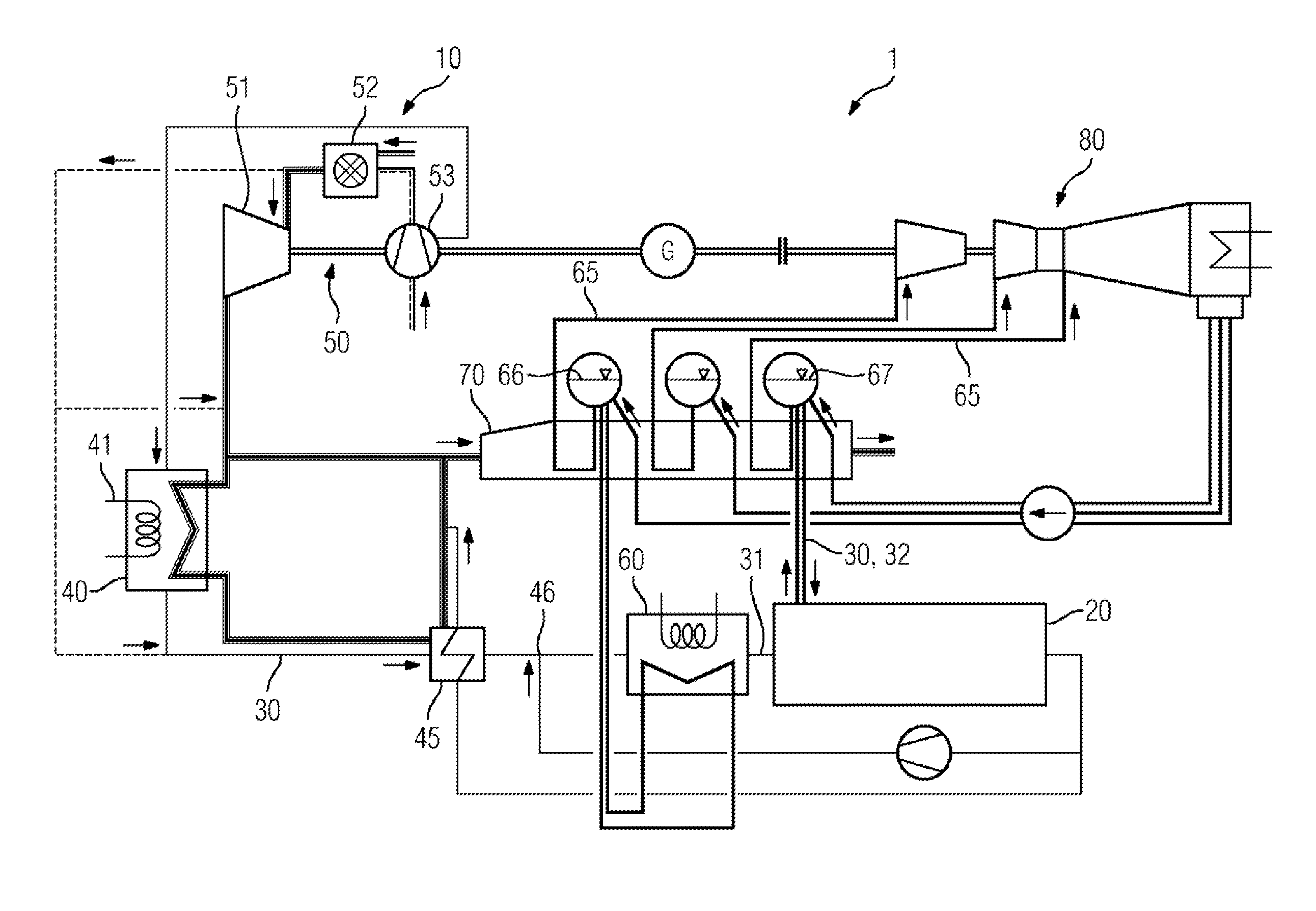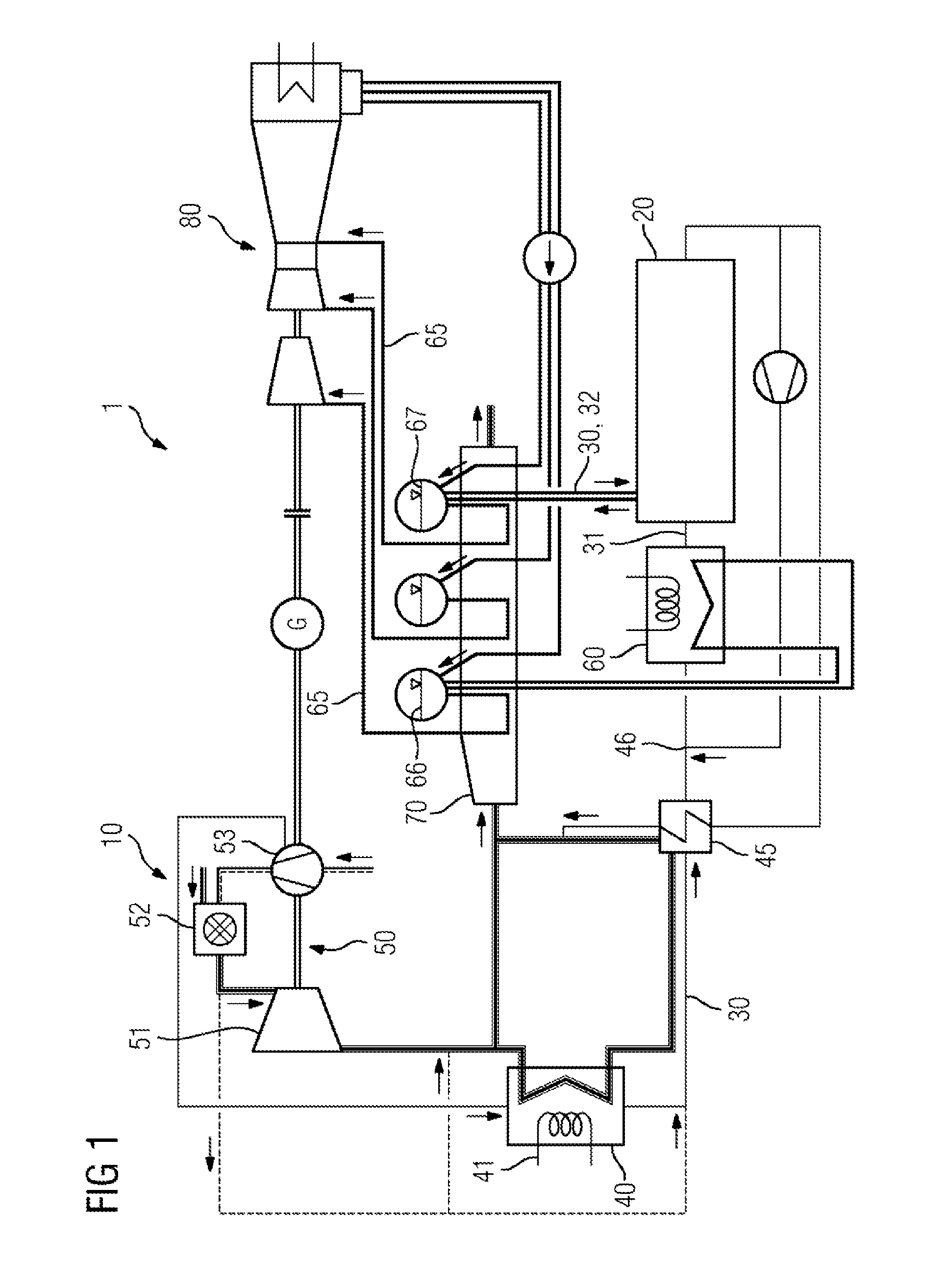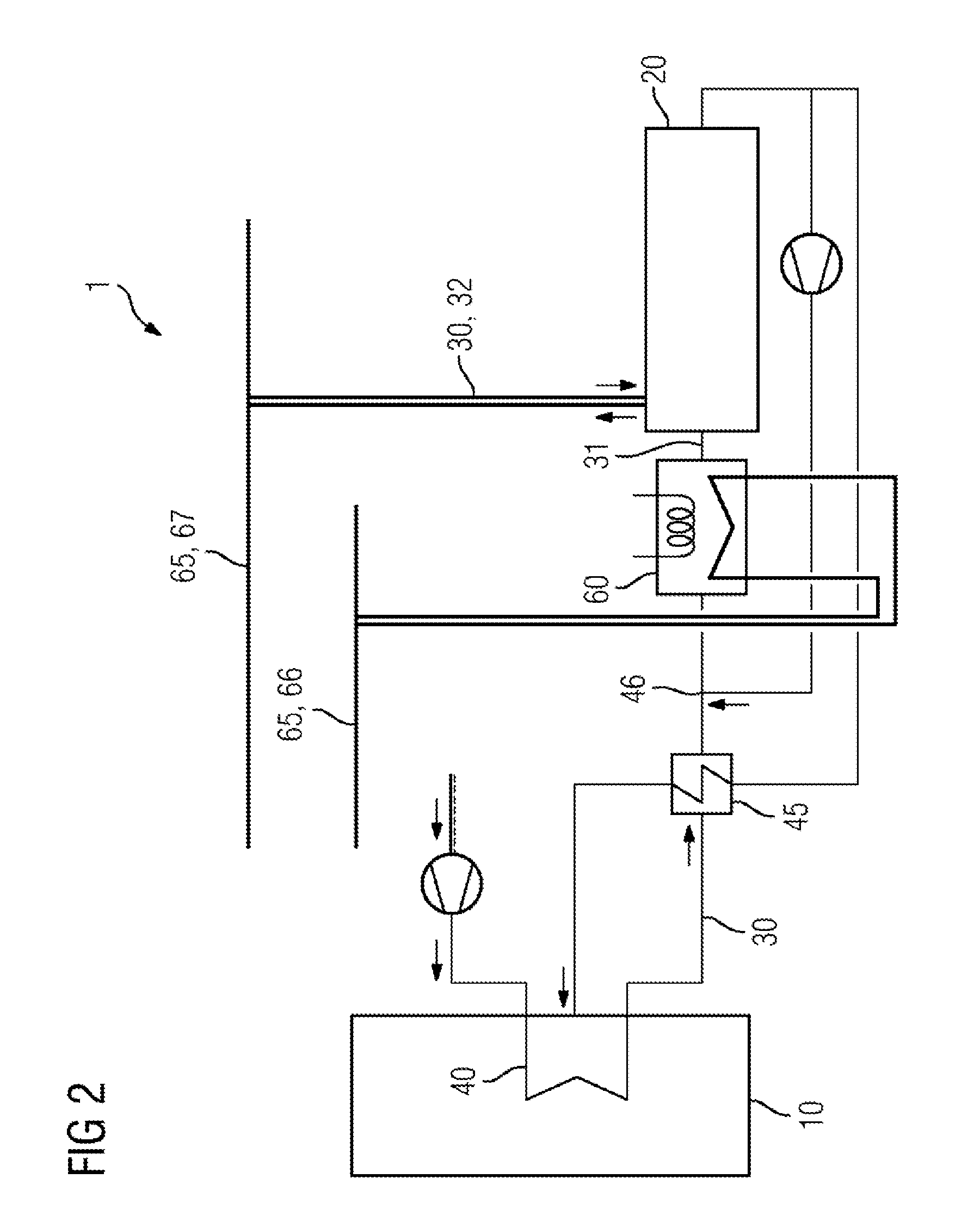Power station arrangement with high-temperature storage unit
a technology of storage unit and power station, which is applied in the direction of steam use, machine/engine, energy input, etc., can solve the problems of ohmic power loss, increased heat demand, and cooling during charging, so as to achieve energetically efficient utilization of thermal energy, improve efficiency, and cover heat demand
- Summary
- Abstract
- Description
- Claims
- Application Information
AI Technical Summary
Benefits of technology
Problems solved by technology
Method used
Image
Examples
Embodiment Construction
[0052]FIG. 1 shows a schematic view of a first embodiment of the power station arrangement 1 according to the invention. In this case, a gas turbine 50 is incorporated as an energy generating unit 10 and has an expansion stage 51, a combustion chamber 52 connected thereto, and a compression stage 53 connected thereto. Thermally conditioned fluid flows can be extracted both from the expansion stage 51 and from the combustion chamber 52 and from the compression stage 53 in each case and are fed to a second heat exchanger 40. The composition of the respectively extracted fluid flows can vary. Thus, for example the fluid flow extracted from the compression stage 53 is a thermally conditioned air flow. The fluid flow extracted from the combustion chamber 52, like the fluid flow as an exhaust gas flow extracted from the expansion stage 51, can also have combustion products. The gas turbine 50 is coupled to a generator (identified by the letter G) for torque transmission and allows power g...
PUM
 Login to View More
Login to View More Abstract
Description
Claims
Application Information
 Login to View More
Login to View More - R&D
- Intellectual Property
- Life Sciences
- Materials
- Tech Scout
- Unparalleled Data Quality
- Higher Quality Content
- 60% Fewer Hallucinations
Browse by: Latest US Patents, China's latest patents, Technical Efficacy Thesaurus, Application Domain, Technology Topic, Popular Technical Reports.
© 2025 PatSnap. All rights reserved.Legal|Privacy policy|Modern Slavery Act Transparency Statement|Sitemap|About US| Contact US: help@patsnap.com



